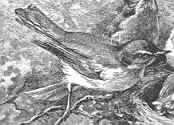Copyright law exists for a purpose: to make creativity pay. Making accurate photographic copies of paintings is no doubt valuable and involves painstaking work. But it isn’t—and isn’t meant to be—creative. With all the digital assaults on the old copyright verities, the champions of intellectual property can’t afford to waste their energies trying to monopolize images that already properly belong to us all.Felten seems to think that the Bridgeman case was correctly decided. Even if he does not, I think so. If faithful reproductions of public-domain artworks turn out to be under-produced as a result of the Bridgeman rule, Congress can create special, short-duration, narrow-in-scope sui-generis protection for such reproductions.
Friday, July 31, 2009
Eric Felten weighs in on the NPG/Wikimedia spat
Eric Felten has an article in the Wall Street Journal about the dispute between the U.K.'s National Portrait Gallery and Wikimedia Commons over high-resolution images of portraits that were uploaded to the latter. Felten concludes
Subscribe to:
Post Comments (Atom)



2 comments:
I seem to recall something similar in books of public domain authors. The cover leaf often contains the words "copyright of this edition". As if the editing and layout of a book was an artistic endeavour in itself. But perhaps this refers to the copious footnotes and forewords such editions often contain.
Still, the debate about where reproduction ends and art begins is as old as photography. In the 1920s, there were 'artistic' photographers who claimed that the picture only turned into art, if it was tampered with during development. Edward Steichen was the most famous of these.
Yes, that may seem remote in a case where reproduction is the stated aim, but a painting does not look twice the same even to the naked eye, as the lighting changes continually, affecting colours, brightness and the reflectivity and drop shadows of the brush strokes. The choices of lighting, film, lens and camera settings have an enormous effect on the outcome. Famous paintings are reproduced in dozens of books, but never twice the same way. Each art book has its own style, some trending towards pale pastels while others emphasize strong contrasts.
I could be persuaded to see these choices as artistic and so might the judge, depending on mood or the quality of presented arguments. Must have been Groklaw which taught me that nothing is cut and dry when it comes up in court. Still, I hope Wikimedia wins this, as I can't afford a ticket to London to see these.
The following might be of interest:
Some countries (so I hear) have a "published edition right" in public domain books, which is a sort of very thin copyright which prevents one competitor from copying the page layout of someone else's edition directly, though it can still do its own page-layout using the words (not the typesetting) of the protected edition as a source.
The U.S., however, does not have such a "published edition right" for books. It does, however, have a curious sui-generis right in boat-hulls. If a boat-hull is registered for this right, a competitor can't copy the boat hull by the plug-molding technique during the term of protection (which I think is about 10 years) though it can copy the hull by older means, i.e. measuring it with rulers. After the term expires (so I understand), competitors are free to copy the hulls by any means.
Post a Comment